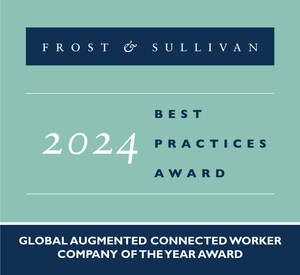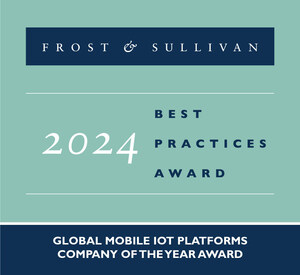Frost & Sullivan predicts the smart home as a billion dollar opportunity
SINGAPORE, Sept. 14, 2018 /PRNewswire/ -- The home will emerge as an increasingly valuable site for enhancing the healthcare experience as part of the progression of digital, remote, connected and virtual care. Health systems are evolving beyond care delivery of the diseased to encompass numerous health and wellness touchpoints, transforming it from disease management to health management.
This was one of the key issues discussed at the recent Frost & Sullivan GIL Executive Briefing on the topic "The 2025 Smart Home for Delivering Healthcare" at the Conrad Centennial, Singapore on 13 September 2018.
Reenita Das, Partner and Senior Vice-President, Transformational Health: "With the transition from volume- to outcomes-based care, there will be significant impact on patient engagement strategies in terms of adoption of wearables, apps and digital therapeutics with value and innovation remaining relevant," she explained.
One of the most notable disruptions in healthcare services over the next five years will be the concept of Smart Homes, which involves a connected ecosystem of sensors and devices on and around the individual at home.
According to Frost & Sullivan, smart homes will amplify the benefits of precision health through personalization, decentralization, collaboration and prevention.
Smart homes will evolve from serving critical care needs to monitor and manage overall health and wellness of the individuals.
Driven by the Internet of Things (IoT) and other technologies, smart home can deliver improved consumer experiences by communicating data between wearables, home monitoring devices, home-based sensors, consumer electronics and mobile apps.
With this paradigm shift, the focus of a smart home will evolve from meeting critical care needs such as Aging-in-place, Chronic Disease Management and Post-acute Care Monitoring to focusing on overall health and wellness in areas of Maternal, Infant & Child Health, and Care for physically and Intellectually Disabled and Health and Wellness for All.
Smart Home as testbed for evolution of Technology Interventions for Medical Specialties
At present, current tech interventions for medical specialties work in silos, providing disease-specific insights. For instance, blood glucose levels are solely monitored by individual machines such as Glucometers and CGMs.
However, the intelligent homes of the future will bring together technology to offer a holistic picture of person's health, providing quantifiable changes over time. An example would be the smart toilets and sensors in the home of the future which will analyze factors such as the number of bathroom visits, urine output and chemical composition
Smart homes will offer multiple opportunities in terms of health and wellness and ageing-in-place
In-depth connected ecosystems focusing on wellness and management will offer the greatest opportunities to industry and non-industry players. There will also be an increased need for cross-industry partnerships.
Although healthcare providers prefer developing in-house solutions but industry partnerships will help them establish therapeutic ecosystems that deliver value through multiple points of care.
With this in mind, technology giants are fast advancing into the healthcare industry, some with traditional, horizontal ICT offerings whilst others with unprecedented vertical strategies and business models. All aim to capitalize on the next inevitable step in healthcare digital transformation – a massive data and workload exodus to the cloud which will impact providers, payers, pharmaceuticals, medical equipment companies and government agencies.
With data the new currency in healthcare, there is greater need for cybersecurity risk management services to prevent loss of confidential patient data and workflow disruption across critical care infrastructure. However, many healthcare organizations lack the dedicated resources to manage this. Hence, they will increasingly depend on vendor partners to provide cyber-risk management and compliance services such as threat assessment and incidence response.
In addition to cybersecurity, another major hurdle would be the interoperability of various data systems and devices that are critical to capturing holistic patient outcomes. Other challenges include changes in the regulatory framework and payment models; significant dollar investment in new technologies and workflows, and cultural and consumer behavior shift across all industry stakeholders.
About Frost & Sullivan
For over five decades, Frost & Sullivan has become world-renowned for its role in helping investors, corporate leaders and governments navigate economic changes and identify disruptive technologies, Mega Trends, new business models and companies to action, resulting in a continuous flow of growth opportunities to drive future success. Contact us: Start the discussion.
Contact:
Melissa Tan
Corporate Communications – Asia Pacific
P: +65 6890 0926
F: +65 6890 0999
E: [email protected]
SOURCE Frost & Sullivan
Related Links
WANT YOUR COMPANY'S NEWS FEATURED ON PRNEWSWIRE.COM?
Newsrooms &
Influencers
Digital Media
Outlets
Journalists
Opted In






Share this article